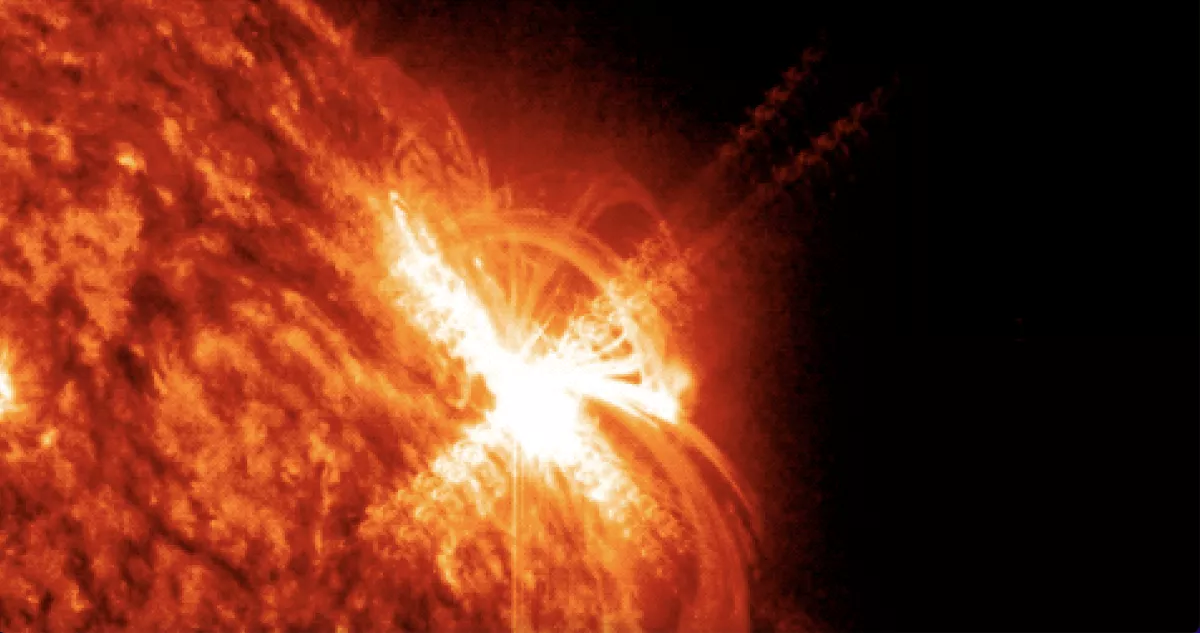Nuclear energy accounts for approximately 10 percent of electricity production worldwide. In some countries, such as France, this figure reaches almost 70 percent. Large technology companies such as Google are also turning to nuclear energy to meet the huge demands of data centers.
The source of all nuclear energy is the binding energy of an atom. The energy stored in an atom can be released in two main ways: fission or fusion. Fission involves the splitting of large heavy atoms into smaller, lighter atoms. Synthesis consists of combining small atoms with larger atoms.
Both processes release a lot of energy. For example, a nuclear decay of the uranium isotope U235, commonly used as a fuel in most power plants, produces 6 million times more energy than a single chemical reaction with the purest coal. This means that these are excellent processes for energy production.
Fission is the process behind every nuclear power plant in operation today. It occurs when a small subatomic particle called a neutron hits a uranium atom and shatters it. This releases more neutrons, which continue to collide with other atoms, starting a nuclear chain reaction. This releases large amounts of energy.
To convert this energy into electricity, a heat exchanger is installed, which converts water into steam and drives a turbine to produce electricity. The fission reaction can be controlled by suppressing the neutron supply. This is achieved by placing “control rods” that absorb neutrons.
Historically, nuclear accidents such as Chernobyl occurred when rods failed to activate and quench the neutron supply and/or coolant circulation was interrupted.
So-called “third generation” designs improve upon previous designs by incorporating passive or innate safety features that do not require active control or human intervention to prevent accidents in the event of a malfunction. These functions may rely on pressure drops, gravity, natural convection, or the natural response of materials to high temperatures.
The first reactors of the third generation were the improved boiling water reactors Kashiwazaki 6 and 7 in Japan. An unsolved fission problem is that the byproducts of the reaction remain radioactive for long periods of time, thousands of years. If processed, the fuel source and waste can be used to make nuclear weapons.
Fission energy is a proven technology. It can also be scaled from large reactors (the largest is the 7.97 gigawatt Kashiwazaki-Kariwa nuclear power plant in Japan) to small and medium-sized reactors producing about 150 megawatts of electricity used on ships or nuclear submarines.
Australia’s eight nuclear submarines, promised under a trilateral security partnership with Great Britain and the United States, will be equipped with such reactors.
What is fusion?
Fusion is the process that powers the Sun and stars. This is the opposite process to fission. It is formed by the combination of atoms. The simplest reaction that can be initiated in the laboratory is the synthesis of isotopes of hydrogen, deuterium and tritium. Per unit mass, the reaction produces 4 times more energy than the fission of U235.
The deuterium fuel ion is incredibly common on Earth and throughout the universe. Tritium is very rare on Earth because it is a radioactive substance with a half-life of 12 years. The universe is 13.8 billion years old; The only naturally occurring isotopes of light nuclei (hydrogen, helium, and lithium) are those that are stable on such time scales.
Tritium will be produced using a “lithium blanket” in the thermonuclear power plant. It is a solid lithium wall in which fusion neutrons slow down and eventually react to form tritium.
However, it is currently very difficult for scientists to create a fusion reaction outside the laboratory. This is because fusion requires incredibly high temperatures: optimal conditions are 150 million degrees Celsius. At these temperatures, fuel ions are in a plasma state where electrons and (nuclear) ions dissociate. The byproduct of this process is helium, which is an inert gas, not radioactive.
The leading technological way to demonstrate sustainable fusion is called toroidal magnetic confinement. This is when the plasma is kept at extreme temperatures in a very large, doughnut-shaped magnetic bottle.
Unlike fission, this technological route requires continuous external heating to obtain synthesis conditions and a strong confining field. Stop any of these conditions and the reaction will stop. The problem is not in uncontrolled melting, but in the execution of the reaction.
The main unsolved problem of magnetically confined toroidal fusion that has attracted the greatest interest from researchers is the burning demonstration of a self-heating plasma. This is when the heat energy produced by the reaction itself is primary. This is the goal of the government’s multinational ITER project, the world’s largest thermonuclear experiment, and the private, government-funded SPARC experiment at the Massachusetts Institute of Technology.
But most of the scientific community agrees that fusion will not become commercially viable until at least 2050.
A climate solution?
I am often asked whether nuclear energy can save the Earth from climate change. I have many colleagues in the field of climate science, and my late wife was a famous climate scientist. The science is clear: It’s too late to stop climate change. The world must do everything it can to reduce carbon dioxide emissions and minimize catastrophic damage, and this should have been done decades ago.
Fracking for the planet is part of this global solution, along with the widespread deployment and adoption of renewable energy sources such as wind and solar. It may be hoped that fusion may replace fission in the more distant future. Fuel reserves are much larger and dispersed everywhere; The waste problem is much smaller in terms of volume and time, and technology cannot be used as a weapon.
Source: Port Altele
